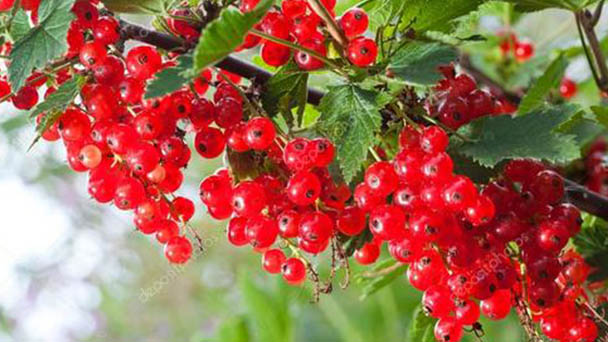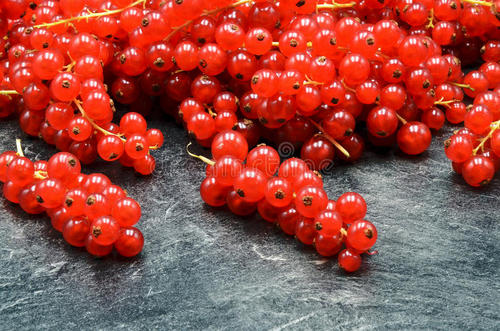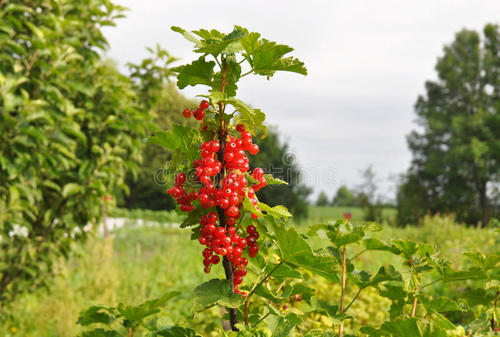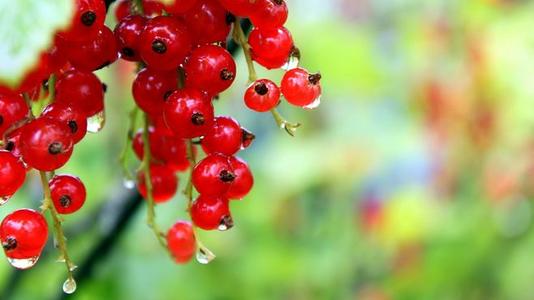How to grow and care for redcurrant
Written by Maggie
Jan 30 2021

Redcurrant is mainly distributed in northern China and mainly matures in summer each year. Originally, it was a kind of berry that Europeans liked to eat. Later, it was discovered by Chinese people and became very popular after being introduced into China. So how does Redcurrant grow? Let's take a look at growing redcurrant care.
1. Soil care for growing redcurrant
Redcurrant prefers more acidic soils, with a higher yield on fertile soils, rich organic matter, loose and dense soils. When we grow and care for redcurrant, choose a low altitude, ventilated and sunny plot, after the selection of land preparation work, deep plowing, disinfection and fertilization. They were then planted in the spring when both the temperature and water content were suitable for the germination and survival of Redcurrant seeds. Before transplanting, the planting density should be controlled according to the planting quantity and the planting hole should be dug. Redcurrant is a lush plant, and if planted too densely, branches may overshoot nearby plants, affecting growth.
2. Fertilizer and water care for growing redcurrant
After successful transplanting, we should do a good job in fertilizer and water management. When we grow and care for redcurrant, we should apply sufficient base fertilizer before transplanting. The base fertilizer is mainly cooked farmyard fertilizer, which can be carried out together with the land preparation work to ensure that the fertilizer is fully mixed with the soil. After applying, the soil will be compacted and watered sufficiently. Then according to the growth of the plant timely topdressing, at least twice a year, once in the seed germination stage topdressing urea nitrogen fertilizer, and then after the fall of a compound fertilizer topdressing. To promote the growth of the Redcurrant, pay attention to the location of fertilization, do not contact the plant directly, avoid burning the roots. When we grow and care for redcurrant, the moisture content of the soil should not be less than 70%, but it should not be too much, and timely drainage should be paid attention to when there is water.

3.Plastic trimming care for growing Redcurrant
Redcurrant plants are very luxuriant and have a lot of branches, so trimming is very important. When we grow and care for the redcurrant, if the pruning is not done properly, the disorganized branches of the plant will not only affect the light absorption, reduce the flowering and bearing rate, but also seriously hinder the later harvest of fruit. redcurrant pruning is the same as a top dressing, which should be carried out at least twice a year. Once in the germination stage, the basal branches of the Redcurrant cluster should be controlled to 18 or so, divided into four years, and 4-5 branches should be kept each year to form the basal plant cluster. At the same time, the drooping, over-long and over-dense branches and pests and diseases will be cut off, improve the permeability of the orchard, promote flowering and bearing.
4. Growing redcurrant care for pest control
The common diseases and insect pests of Redcurrant include powdery mildew and cross-wing moth, etc. Whatever the diseases and insect pests are, they are very harmful to the growth of Redcurrant. Powdery mildew will harm the plant leaves, make the plant leaves black and withered, leaf damage will affect the photosynthesis of the plant, lead to a serious deficiency of nutrient accumulation, reduce the yield, poor fruit quality. The moth can harm plant branches, causing them to wither and fall off. When we grow and care for redcurrant, we must do a good job in the prevention and control of diseases and insect pests, strengthen the orchard management, pay attention to planting density, enhance field permeability, timely cut off damaged branches and leaves, regular disinfection of the orchard, to avoid unnecessary economic losses.

Latest Updated
- Benefits of Bugleweed - 7 Science-backed Health Benefits
- Bugleweed Dangers & Side Effects - Is It Poisonous?
- How to Plant Evergreen Trees - What You Should Know
- When to Plant Evergreens - Grow Guide for Evergreen Trees
- 12 Wonderful Evergreen Shrubs for Your Garden
- 12 Popular Evergreen Plants with Pictures for Beginners
- When And How To Prune A Lilac Bush Like a Pro
- How to Grow & Care for Lilac Vine (Hardenbergia Violacea)
- Japanese Lilac Tree (Syringa Reticulata) Care & Propagation Guide
- Shumard Oak Pros and Cons - What to Know
Popular Articles
- Winter maintenance of Antirrhinum Majus
- How to Grow Terminalia Mantaly Tree
- How to Grow and Care for Crossostephium Chinense
- How to grow Antirrhinum Majus in spring
- Peristeria Elata (Dove Orchid) Profile: Info & Care Guide
- Underwatered Snake Plant (Sansevieria Trifasciata) - Signs And How To Fix
- How to Care for Brazilian Jasmine Plant (Mandevilla Sanderi)
- How to Grow & Care for Graptopetalum Purple Delight in Summer
- Rosa Chinensis (China Rose): Plant Growing & Care Tips
- How to Care for Baby Sun Rose (Aptenia Cordifolia)
